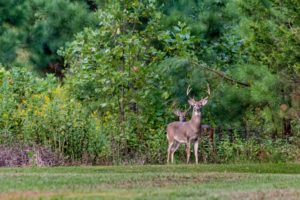
Historically many rural lands in Texas weren’t viewed to hold much significance unless utilized to offer some source of revenue to the landowner and the market. Throughout the 1800s and early to mid-1900sland in Texas was mostly utilized for agriculture production like livestock grazing, timber harvesting or large-scale crop production. Through these approaches property owners could make income from their property holdings. Simultaneously, the nation saw the market thrive in the aftermath of large scale agriculture usage, so much that Texas started providing land tax breaks to landowners which using their land for agriculture generation for example cattle grazing or farming.
Landowners and ranchers that utilized grazing approaches tended to overgraze landscapes to boost their cows generation. Farmers which were in big scale crop production saw elevated quantities of erosion and mineral depletion in areas after harvest and planting. To decrease the adverse effect on ecosystem sources out of agriculture production, the country presented another kind of tax exemption to lure landowners to maintain natural resources and wildlife species.
There are two different types of appraisal approaches in Texas that permit for tax exemptions for land owners. This sort of evaluation is suitable to landowners using their territory full time exclusively for agriculture production and the landowner’s income comes out of the farming enterprise. Because of this, the country introduced a more proper tax break that landowners have taken good advantage of. The OSL is based only on the principal usage of this property and does not have any thought for the landowner’s income or job which makes it far more attractive to landowners searching for tax relief. Additional in 1995 Texas passed bill HB 1358 which included pest control to the record of qualifying agriculture clinics for real estate tax relief under Open-space evaluation 1-d-1. Most property owners in Texas that make the most of tax exemption collapse beneath the Open-space evaluation 1-d-1, either via agriculture evaluation or wildlife.
To qualify for OSL particular tax assessment based on wildlife management use, there are a couple of requirements that have to be fulfilled. The first is that the land should have been capable and assessed as open-space agriculture property usage the calendar year before conversion to wildlife management use. In case the property isn’t currently capable under the open-space agriculture land use evaluation, the landowner may make an application for eligibility by submitting documentation behind agriculture usage of their land five from their previous seven decades. Individual use suggests that wildlife species have to be used for meals, medication, diversion through active pursuits such as hunting or photography or through passive use for example possessing land and properly managing the wildlife sources. The OSL predicated on pest management also needs the land to submit a wildlife management program to the primary tax appraiser from the county that it resides. The wildlife management program should coincide with the management practices employed on the designated land and which also match the urge practices for this particular ecoregion summarized in Texas Parks and Wildlife Department Comprehensive Wildlife Management Plan Guidelines.








